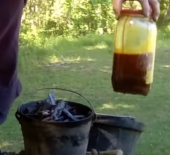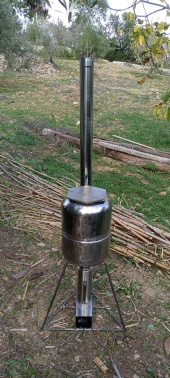



William Bronson wrote:Stacking charcal making with space heating is one of my man obsessions.
Distilling tars/oils/resins/vinegar from wood is very doable at the homestead scale.
I'd be concerned that some of the condensates wll be toxic.
Here's a video of a technique that produces high quality charcoal and condensate:
https://youtu.be/fTOHBrFuh68?si=1ZEUuKoUja4tPCPI
This method heats the charcoal feedstock directly with the combustion gasses of the wood fire
Like most of the methods we see, the wood fire that provides the heat for the pyrolysis is relatively dirty and inefficient.
Firing retort/still with a tlud,rocket stove or even a properly managed modern conventional woodstove could be an improvement.
I've favored using a tlud, despite the fuel prep needed ,because they can burn for a long time without tending, and they are dead simple to make.
A recent thread made me realize that a charcoal making retort heated by a charcoal fire would do the same, with less labor, and the same equipment.


Justin Vink wrote:Very interesting. What is the length of time on the burn?